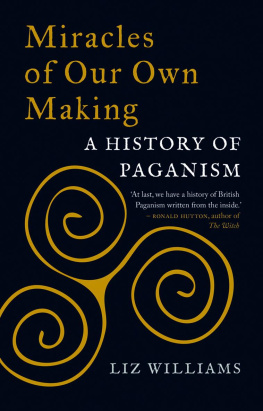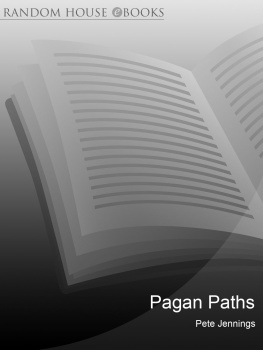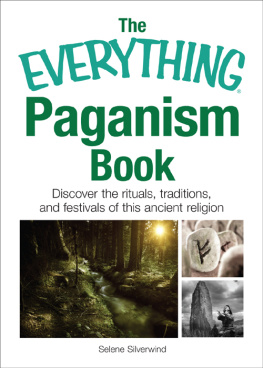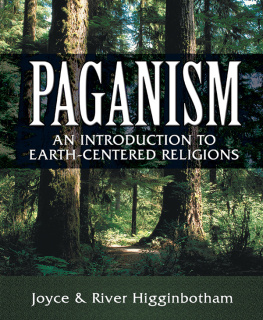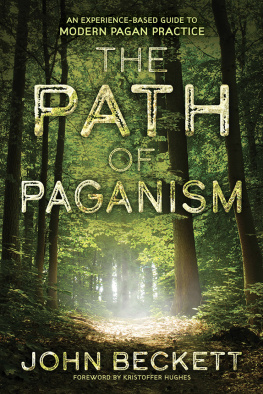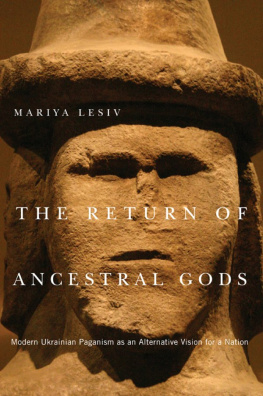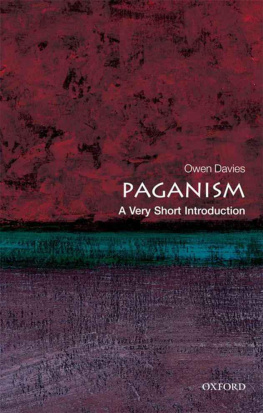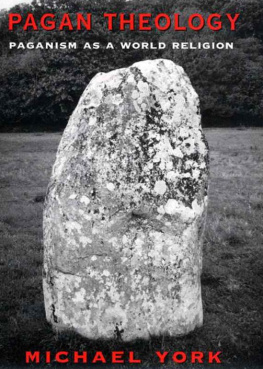A HISTORY OF PAGAN EUROPE
First published 1995
by Routledge
2 Park Square, Milton Park, Abingdon, Oxon, OX14 4RN
Simultaneously published in the USA and Canada
by Routledge
711 Third Avenue, New York, NY 10017
Reprinted 1995
First published in paperback 1997
Reprinted 1998, 2003, 2005, 2006, 2007, 2008, 2009
Routledge is an imprint of the Taylor & Francis Group, an informa business
1995 Prudence Jones and Nigel Pennick
Typeset in Garamond by Florencetype Ltd, Stoodleigh, Devon
All rights reserved. No part of this book may be reprinted or reproduced or utilised in any form or by any electronic, mechanical, or other means, now known or hereafter invented, including photocopying and recording, or in any information storage or retrieval system, without permission in writing from the publishers.
British Library Cataloguing in Publication Data
A catalogue record for this book is available from the British Library
Library of Congress Cataloging in Publication Data
A catalog record for this book is available from the Library of Congress
ISBN 10: 0-415-09136-5 (hbk)
ISBN 10: 0-415-15804-4 (pbk)
ISBN 13: 978-0-415-09136-7 (hbk)
ISBN 13: 978-0-415-15804-6 (pbk)
CONTENTS
MAPS
PLATES
This book has been in the making for twenty years, since one of the authors lived in Canada, a European culture made intangibly different by the absence of encrusted layers of European history. Part of the reason for this intangible difference is made clear in the present volume. The European Pagan heritage is one that is generally overlooked, but here we bring it to light.
Over the years many people have helped with ideas and research. For the present volume, two people in particular have given of their time and expertise and our manuscript would be much the poorer without them. One is Mr Phil Line, who kindly offered his considerable knowledge of Finnic and Baltic religion in reading our Hutton, who valiantly read through the whole manuscript, making many observations on matters of fact, restraining any impulse to comment on points of interpretation, but keeping us up to date with current scholarship on the subject. Any errors that remain are ours and not theirs.
We are acutely aware that worthwhile research is impossible without easy access to literary sources and commentaries. The open bookstacks of the Cambridge University Library are a blessing to the serious investigator, and its friendly and helpful staff turn research into a pleasure.
All references are credited in the footnotes, but we are grateful to the following for permission to reprint longer passages of copyright material:
Viking Penguin, Inc., Laurence Pollinger Ltd and the Estate of Frieda Lawrence Ravagli have been unsuccessful, but we are grateful to Cassell pic, present owners of the Geoffrey Chapman imprint, for their help in the matter.
Prudence Jones
Nigel Pennick
Lammas 1994
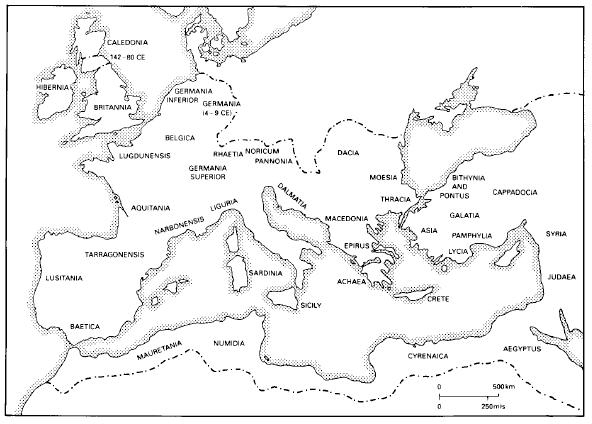
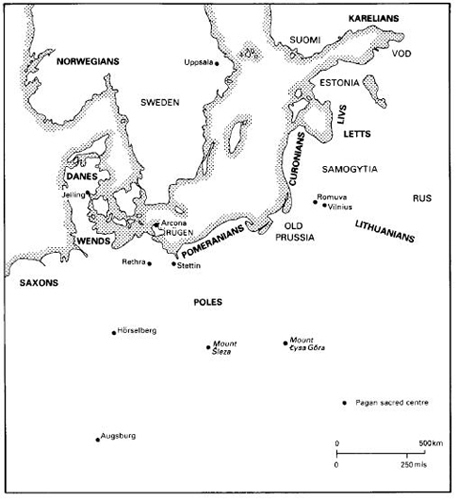
In this book we describe the hidden history of Europe, the persistence of its native religion in various forms from ancient times right up to the present day. Most people today are more familiar with native traditions from outside Europe than with their own spiritual heritage. The Native American tradition, the tribal religions of Africa, the sophistication of Hindu belief and practice and the more recently revived Japanese tradition, Shinto, are widely acknowledged as the authentic native animistic traditions of their respective areas. In marked contrast, the European native tradition, from the massive civilisations of Greece and Rome to the barely documented tribal systems of the Picts, the Finns and others on the northern margins of the continent, has been seen as having been obliterated totally. This tradition is presented as having been superseded first by Christianity and Islam and, more recently, by post-Christian humanism. In this book we argue that, on the contrary, it has continued to exist and even to flourish more or less openly up to the present day, when it is undergoing a new restoration.
But first to define our terms. The
The name stuck long after its origin had been forgotten, and developed a new overlay of usage, referring to the great Classical
Lawrences terminology has overtones of more recent contemporary usage, where Pagan is employed once more in its root meaning to describe a Nature-venerating religion which endeavours to set human life in harmony with the great cycles embodied in the rhythms of the seasons. In what follows we adhere broadly to this convention, using the word Paganism (capital P) to refer to Nature-venerating indigenous spiritual traditions generally, and in particular to that of Europe, which has been specifically reaffirmed by its contemporary adherents under that name. Pagan religions, in this sense, have the following characteristics in common:
They are polytheistic, recognising a plurality of divine beings, which may or may not be avatars or other aspects of an underlying unity/duality/trinity etc.
They view Nature as a theophany, a manifestation of divinity, not as a fallen creation of the latter.
They recognise the female divine principle, called the Goddess (with a capital G, to distinguish her from the many particular goddesses), as well as, or instead of, the male divine principle, the God. (Throughout this book we use the word god exclusively to refer to male divinities, not to the divine source or godhead itself.)
In this sense all native animistic religions worldwide are Pagan, fulfilling all three characteristics. A religion such as Hinduism is Pagan, but Judaism, Islam and Christianity are obviously not, since they all deny the Goddess as well as one or both of the other characteristics. Buddhism, which grew out of the native Hindu tradition, is a highly abstract belief system, dealing with that which is beyond time and manifestation rather than with the interventions of deities in the world. In its pure form it retains little in common with its Pagan parent. All three characteristics listed above are, however, shared by modern Paganism in its various forms with the ancient religions of the peoples of Europe, as this book will show.
In recent years many people of European origin have been drawing on the ancient indigenous tradition as the basis of a new religion for the twenty-first century. This new religion, called neo-Paganism or simply Paganism, is most broadly a form of Nature-mysticism. It is a belief which views the Earth and all material things as a theophany, an outpouring of the divine presence, which itself is usually personified in the figure of the Great Goddess and her consort, the God or masculine principle of Nature. Between them, these two principles are thought to encompass all existence and all development. In some ways this is a new religion for the New Age. Modern thought is represented in these two basic divinities whose influence is complementary rather than hierarchical or antagonistic. Present-day Pagans tend to see all gods and goddesses as being personifications of these two, in contrast to the situation in antiquity, when the many gods and goddesses of the time were usually thought of as truly independent entities. In its most widely publicised form, neo-Paganism is a theology of polarity, rather than the polytheism of ancient European culture.



